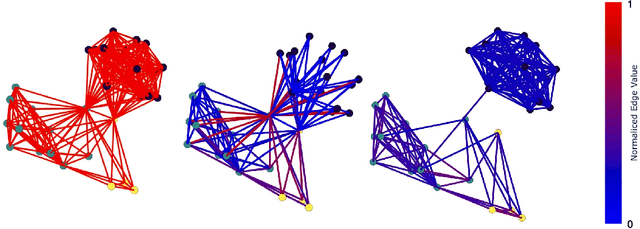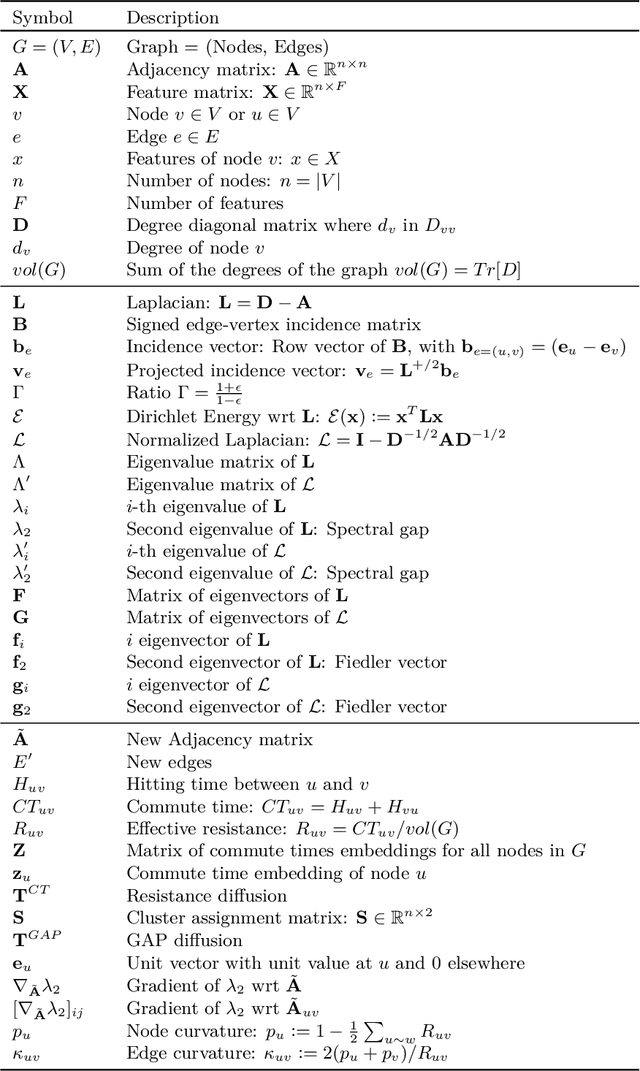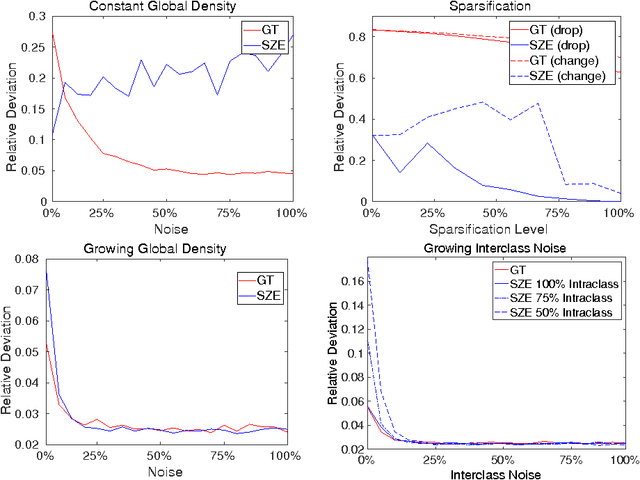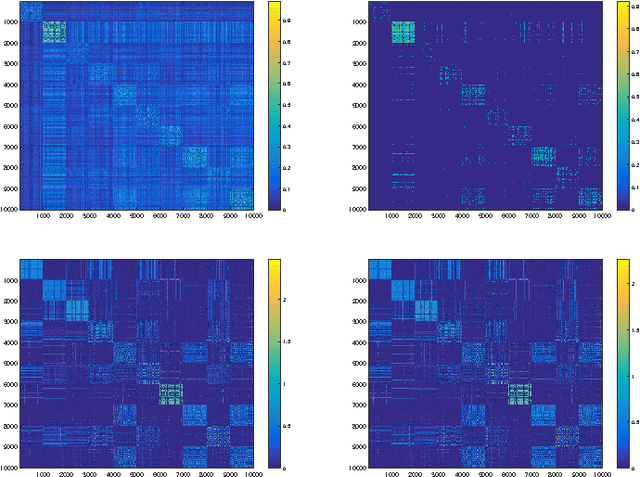Francisco Escolano
Diffusion-Jump GNNs: Homophiliation via Learnable Metric Filters
Jun 29, 2023Abstract:High-order Graph Neural Networks (HO-GNNs) have been developed to infer consistent latent spaces in the heterophilic regime, where the label distribution is not correlated with the graph structure. However, most of the existing HO-GNNs are hop-based, i.e., they rely on the powers of the transition matrix. As a result, these architectures are not fully reactive to the classification loss and the achieved structural filters have static supports. In other words, neither the filters' supports nor their coefficients can be learned with these networks. They are confined, instead, to learn combinations of filters. To address the above concerns, we propose Diffusion-jump GNNs a method relying on asymptotic diffusion distances that operates on jumps. A diffusion-pump generates pairwise distances whose projections determine both the support and coefficients of each structural filter. These filters are called jumps because they explore a wide range of scales in order to find bonds between scattered nodes with the same label. Actually, the full process is controlled by the classification loss. Both the jumps and the diffusion distances react to classification errors (i.e. they are learnable). Homophiliation, i.e., the process of learning piecewise smooth latent spaces in the heterophilic regime, is formulated as a Dirichlet problem: the known labels determine the border nodes and the diffusion-pump ensures a minimal deviation of the semi-supervised grouping from a canonical unsupervised grouping. This triggers the update of both the diffusion distances and, consequently, the jumps in order to minimize the classification error. The Dirichlet formulation has several advantages. It leads to the definition of structural heterophily, a novel measure beyond edge heterophily. It also allows us to investigate links with (learnable) diffusion distances, absorbing random walks and stochastic diffusion.
FairShap: A Data Re-weighting Approach for Algorithmic Fairness based on Shapley Values
Mar 03, 2023Abstract:In this paper, we propose FairShap, a novel and interpretable pre-processing (re-weighting) method for fair algorithmic decision-making through data valuation. FairShap is based on the Shapley Value, a well-known mathematical framework from game theory to achieve a fair allocation of resources. Our approach is easily interpretable, as it measures the contribution of each training data point to a predefined fairness metric. We empirically validate FairShap on several state-of-the-art datasets of different nature, with different training scenarios and models. The proposed approach outperforms other methods, yielding significantly fairer models with similar levels of accuracy. In addition, we illustrate FairShap's interpretability by means of histograms and latent space visualizations. We believe this work represents a promising direction in interpretable, model-agnostic approaches to algorithmic fairness.
DiffWire: Inductive Graph Rewiring via the Lovász Bound
Jun 15, 2022



Abstract:Graph Neural Networks (GNNs) have been shown to achieve competitive results to tackle graph-related tasks, such as node and graph classification, link prediction and node and graph clustering in a variety of domains. Most GNNs use a message passing framework and hence are called MPNNs. Despite their promising results, MPNNs have been reported to suffer from over-smoothing, over-squashing and under-reaching. Graph rewiring and graph pooling have been proposed in the literature as solutions to address these limitations. However, most state-of-the-art graph rewiring methods fail to preserve the global topology of the graph, are not differentiable (inductive) and require the tuning of hyper-parameters. In this paper, we propose DiffWire, a novel framework for graph rewiring in MPNNs that is principled, fully differentiable and parameter-free by leveraging the Lov\'asz bound. Our approach provides a unified theory for graph rewiring by proposing two new, complementary layers in MPNNs: first, CTLayer, a layer that learns the commute times and uses them as a relevance function for edge re-weighting; second, GAPLayer, a layer to optimize the spectral gap, depending on the nature of the network and the task at hand. We empirically validate the value of our proposed approach and each of these layers separately with benchmark datasets for graph classification. DiffWire brings together the learnability of commute times to related definitions of curvature, opening the door to the development of more expressive MPNNs.
On the Interplay between Strong Regularity and Graph Densification
Mar 21, 2017

Abstract:In this paper we analyze the practical implications of Szemer\'edi's regularity lemma in the preservation of metric information contained in large graphs. To this end, we present a heuristic algorithm to find regular partitions. Our experiments show that this method is quite robust to the natural sparsification of proximity graphs. In addition, this robustness can be enforced by graph densification.
 Add to Chrome
Add to Chrome Add to Firefox
Add to Firefox Add to Edge
Add to Edge